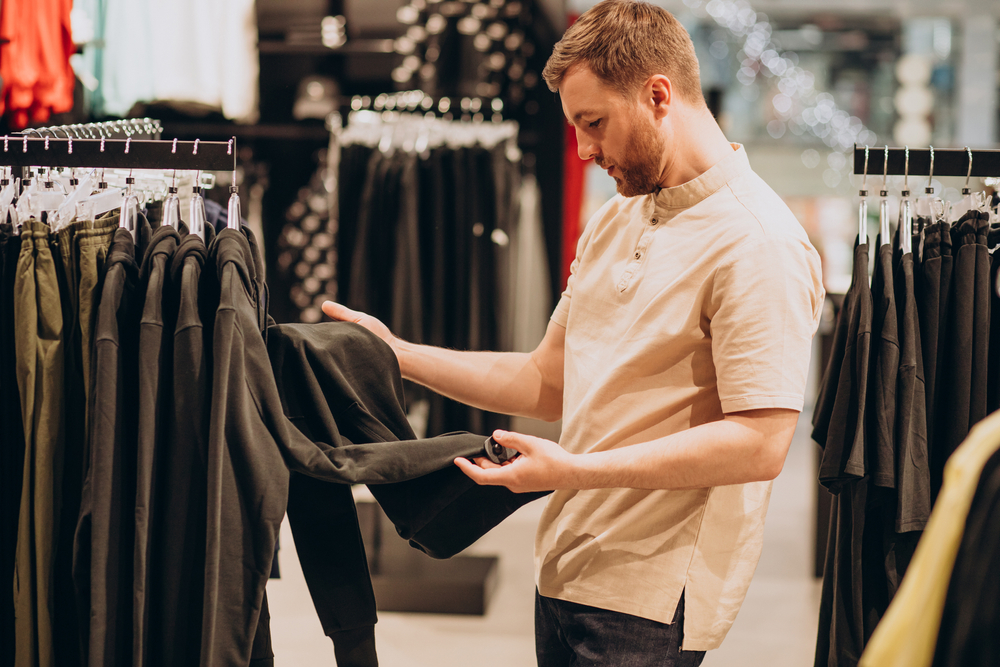The basic rule of thumb for most people over the years is to buy clothes they can wear at least 30 times before they get worn out. However, for a man, 30 wears can sometimes fall short, especially if he finds a favorite piece of clothing. This is why it’s important to invest in long-lasting clothing that can withstand constant wear and washing.
Choosing Long-Lasting Clothing: Quality Over Quantity
For a garment to endure, every step of the manufacturing process should strive for perfection. Right from yarn or fabric processing to the final stitching, every step counts. For instance, if you are thinking of stocking up on sustainably made tees, think about the type of fabric used. How well does it resist shrinkage or pilling? What about the dyeing process? Who are the people producing the clothing? But, before all that, start by taking a closer look at what material it’s made of. Follow these simple tips for selecting clothing that will last over time.
1. Learn the Differences in Materials
Good long-lasting material is quite a murky term because even the superior quality fabric can wear out depending on its sheer weight or amount of use. Nonetheless, some materials are more durable than others.
The first great fabric is wool. Woolen garments, especially alpaca, cashmere and merino wool, are known to last years. They are so good that fleece was engineered from their structural characteristics but made a little more durable and affordable. So, if you are looking for gym wear or outdoorsy clothes, consider fleece sweatpants, sweaters and vests. Raincoats were traditionally made of wool; however, this was replaced by the more lightweight and weatherproof GORE-TEX.
Silk, cotton and linen are also quite durable as well. Cotton is the most popular natural choice. It’s breathable and absorbent and can have a long lifespan with proper care. Silk is best for formal wear which doesn’t require regular laundering, while linen is ideal for summer garments because it breathes well and has a cooling effect.
2. Research How the Clothes Were Made
Next, you should at least have an idea of how the garment you intend to buy was made. The internet makes it easier nowadays to learn about a company’s culture and their production processes. During your skilling-up process, focus more on the stitching, type of thread and whether the garment’s components meet safety standards. Inquire further about other processes, such as weaving and finishing, which heavily affect the durability of a piece.
3. Check Out Reviews From Past Customers

Lastly, before you buy what you like, know a thing or two about what other people are saying about it. Customer reviews, especially from verified buyers, will give you a better idea of the product’s quality and durability. If there are a lot of negative comments about the same issue, it’s probably best to steer clear of that garment.
Caring for Long-Lasting Clothing
You’ve invested your time and money in choosing quality, long-lasting clothing; now, it’s important to take proper care of them to ensure their longevity. Here are some tips on how to do so.
4. Read the Care Label and Follow the Instructions
Different fabrics vary in their cleaning, drying, and ironing requirements. So, if you want to retain the color, fiber structure and general appearance of your favorite durable crew necks, take a minute to read the manufacturer’s instructions on how to take care of them.
5. Wash Less Frequently and Air Dry When Possible
Washing your clothes too often is actually one of the main culprits for shortening their lifespan. Unless they are visibly dirty or smell bad, avoid washing them after each wear. Instead, use a spot cleaner or air out the garment to refresh it. This will not only save you time and money on water and electricity bills, but it will also prevent wear and tear from frequent washing. When you do wash your clothes, try to air dry them instead of using a dryer, as the heat can damage fibers over time.
6. Use Appropriate Detergents
Using harsh detergents can also lead to the breakdown of fibers, causing your clothes to wear out faster. Instead, opt for gentle or natural detergents that are specifically designed for your type of fabric. There are people who use vinegar or baking soda to clean their clothes, though this isn’t necessary for most fabrics.
7. Properly Store and Organize Your Clothes

The way you store your clothes can also play a role in how long they last.
To maintain the shape and quality of your clothes, it’s important to use sturdy hangers that prevent stretching or misshapen areas. If you choose to fold them, make sure you do it neatly and avoid piling heavy items on top. It’s also important to rotate your clothes regularly so that they all get equal wear instead of just a few pieces being constantly worn and washed.
8. Repair Damage
As soon as you notice a small tear or loose button, fix it. Letting these issues go unresolved can lead to bigger problems and eventually render the garment unwearable. You can either learn basic sewing skills or take it to a professional tailor for repairs.
If you have leather or suede items, make sure to invest in proper care products to keep them looking and feeling their best. Remember to keep them away from sunlight and humidity, as these can also cause damage over time.
9. Alter To Fit or Refresh Your Style
After some months or even years with your favorite outfit, you might feel like you no longer fit or have the same feeling it evoked when you first bought it. Instead of tossing it away, consider altering the garment to fit your current size or style preference.
You can also get creative and transform an old piece into something completely new. For instance, a pair of old jeans can be turned into shorts or patched to create a unique design. This not only saves you money, but it also reduces waste and gives your clothes a new lease on life.
Men’s Wardrobe That Will Stand the Test of Time
Dressing in your favorite high-quality outfits is an investment in yourself. It contributes to your overall confidence, comfort and appearance. With the right knowledge on how to choose, care for and alter your clothes, you can ensure that they last for a long time. Remember to prioritize quality over quantity, and don’t be afraid to get creative with refreshing old pieces.


